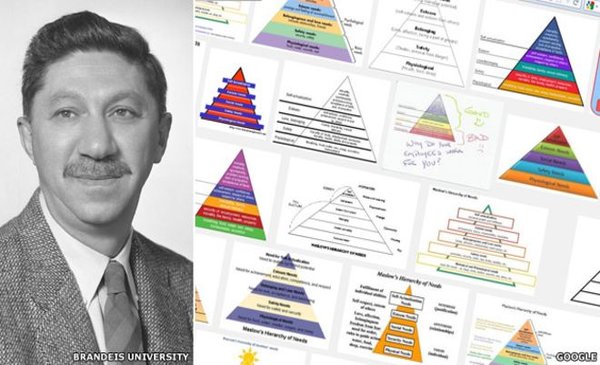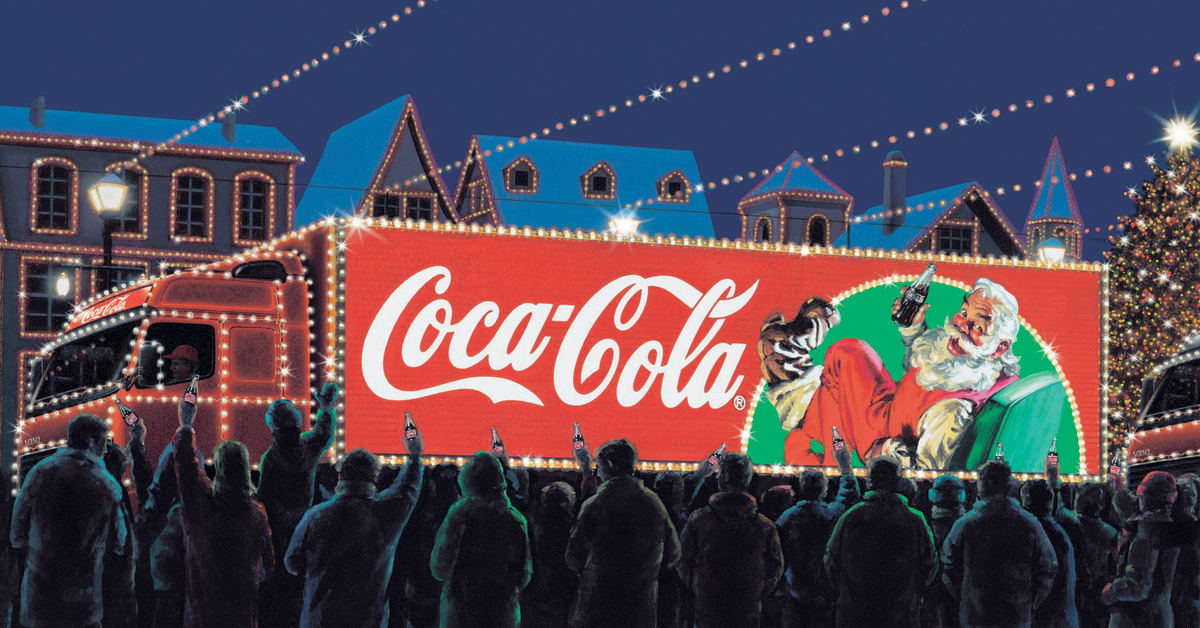
Like many business school professors, I often find the things I teach in the classroom contrast with the things I experience in the boardroom. Last week provided me with the latest in a long line of contradictory experiences.
In the classroom, my MBAs are coming to the end of their Marketing communications class. The group work for this class will culminate in the students pitching competitively against each other and in front of a real client. So, I ended the session by listing three concepts that they should not even consider using in their pitch because they would instantly signal a lack of expertise and strategic naivety.
Throughout the week, I was also working for a client and helping them to select a new advertising agency. Lo and behold, all three of the concepts I had counseled my students against were prominently on display in all the pitches I witnessed.
First up is Maslow’s Hierarchy of Needs. Back in 1943, when Abraham Maslow published ‘A theory of human motivation‘ in the Psychological Review, he was probably unaware that the central model of his thesis would one day grace thousands of PowerPoint charts. However, his claim that human beings must first fullfil basic physiological needs, such as water and shelter, before they can be motivated by higher goals such as safety, friendship and eventually truth has proven to be a stalwart of many tired, old presentations.
The fact that there is no evidence to support Maslow’s contentions, and that plenty of experimental psychology suggests his theory is wildly wrong, is neither here nor there. He sounds foreign and therefore clever, and big words such as ‘hierarchy’ imply some form of scientific rigor. If you are walking into a client pitch with nothing more than a first in history from Oxbridge and a dodgy big idea, you’ll take what you can.
The next great indicator of an agency’s strategic ineptitude is SWOT analysis. This involves you creating a two-by-two grid and then populating it with a list of incredibly obvious client strengths and weaknesses, and another list of equally palpable opportunities and threats. Then you stand back and gaze at this list of incredibly humdrum words, such as ‘competitors’ and ‘new product’, and attempt to intuit a bold, new, innovative way of doing business.
They currently teach SWOT analysis as part of the GCSE in business. I have to question its efficacy for 15-year-old schoolchildren, let alone corporate clients. If an agency ever insults you with one of these, I recommend exiting the pitch room via the nearest open window.
The final clue that your potential agency is, perhaps, not your optimum partner for the future is the way in which they discuss brands. It may only be semantics, but there is a very high correlation between the number of different concepts a marketer uses to describe brands and their actual knowledge of the topic.
There are only three key concepts in branding: brand positioning (what you want the brand to be); brand equity (the current value of the brand, measured in whatever manner you see fit), and brand architecture (to describe the relationships that exist between one brand and another).
Any good agency will restrict themselves to variations on these three terms. A bad agency will throw a veritable dictionary at you. You’ll get brand personality, brand values, brand essence, brand disintegration, brand casting – and so on and so on.
One of the hardest jobs that a marketer will ever face is working out which agencies and consultants to work with. If you encounter any, or all, of the above, at least you know which to avoid.
30 SECONDS ON … MASLOW
– Maslow presents his theory of needs and motivation as a hierarchy; from self-actualization (level 5) at the top to self-esteem (level 4), love and relationships (level 3), family and work (level 2), and the body (level 1).
– At level 5, a person looks for self-fulfilment, to become the best they can. Level 4 represents the need for recognition and respect from peers, while level 3 is the need to love and be loved. At level 2, Maslow argues that humans desire social security and safety, and at level 1 they have a simple need to survive.
– Human motivation is segmented in the same manner. Level 5 is the motivation for creativity. A desire to display one’s talents and intellect to peers lies at level 4. At level 3, people strive for validation and social acceptance by joining groups or marrying. Level 2 is the motivation to work, provide for oneself and family, and save for the future. And level 1 represents the motivation to survive.
The Blake Project Can Help: The Brand Architecture Workshop
Branding Strategy Insider is a service of The Blake Project: A strategic brand consultancy specializing in Brand Research, Brand Strategy, Brand Licensing and Brand Education





7 comments
Robert Kingston
May 28, 2008 at 7:02 am
Hey Mark,
Interesting article. This article really struck a chord with me.
This reminds me of how I entered the workforce as a marketer. Somehow when doing plans for clients and the business I work in, I really couldn’t bring myself to doing an academic marketing plan, complete with SWOT, PESTE and Porters. Eck… They’re so contrived and overly formal – I doubt many of our own clients even use them. The way I see it, if the strengths, weaknesses, opportunities and threats are not obvious to you, you probably shouldn’t be orchestrating the marketing.
As for Maslow… Haha.
I do have to disagree with you on the brand vocabulary point, though. Going through uni I found a LOT of literature which used different words to describe the same things. Even though someone might be all over the place with vocabulary, if they have a thorough understanding of the core ideas in branding, they should be apt for the job.
Although, I guess it all comes down to the work they’re going to be doing for you. If it’s a branding agency, then I’d be careful.
Tate Linden
May 28, 2008 at 1:48 pm
Mark –
Great read. I like your point about Maslow. I hear a lot of folks talk about these sorts of needs – and it just never adds up to a sale for me.
Like Robert I think that the vocabulary is open to interpretation. Perhaps your point is that brand positioning is where the pitch should focus – and that is fine – but the sub components of what your brand should be are still valid. Part of your positioning is likely to be the brand personality, values, essence, or whatever else you believe the positioning is made of. To me it seems that you’re just choosing to keep the discussion at a higher level – and that’s fine. For a simplified sales approach it absolutely makes sense – but if you’re part of a firm that believes that the brand is in the details… then I don’t see a reason not to trot out the dictionary, thesaurus, and whatever else will help you sell that message.
A last thought. The word “brand” itself is becoming less useful by the day. I’m halfway convinced that we should drop the word from our corporate vocabulary because no two people define it the same – even within the same branding company.
Perhaps there should be a qualification to be a branding firm – if your own experts can’t agree on what “brand” means then you can’t be in the industry.
Oh what I would give to live in that world…
Lex
May 30, 2008 at 4:11 pm
Advertising is all about emotion.
Maslow was used ever since Y&R’s “values and lifestyles” became big.
It is still successfully used in politics.
Similar models are used since the days of Edward Bernays, when Freud was still the big thing. Rokeach’ end values were based on the top of Maslow’s theory, and I find them useful everyday.
I also disagree with you on Brand Personality.
David Ogilvy already pointed out it’s importance.
A brand is a word that lives inside the mind of the consumer.
It has a tone-of-voice, a way of behaving etc etc; the brand is a person.
Ted Grigg
June 2, 2008 at 8:31 pm
To me, there is one ineptitude I see over and over in many agencies. They run away from accountability when it comes to growing the client’s business.
The function of advertising is about making money for clients. Yet many agency leaders tell me that only tactics have associated ROIs, but successful strategies defy financial evaluation.
If I am going to spend millions of dollars on advertising, then I had better see convincing data that it will improve my bottom line.
Devon
July 7, 2008 at 6:34 pm
As others have already pointed out, there are other useful considerations in building a brand than just the three mentioned in the post. Typical brand positioning statements don’t get into qualities such as brand personality, but that’s a key factor my branding agency considers when creating brand names. It’s not unusual to have a short list of 8 names–each of which nails the competitive brand positioning–but find nuances in tone that make some names fit the brand better than others.
Gavin Heaton
September 23, 2008 at 6:46 am
I see Maslow and SWOT quite a lot. Unfortunately they are widespread — but rather than spending a lot of time trying to un-do their influence I tend to try and focus on what you CAN get out of them. They can lead nicely into discussions around positioning, audience, architecture and measurement.
Matthew Hodgson
September 23, 2008 at 8:24 am
You’re very right to suggest that Maslow may not have got it right with respect to his Hierarchy of Needs. There is much research that suggests that indeed certain needs can be met before others. However, that’s as far as your comments align with the decades of social psychology research.
Humans are social creatures with social needs that motivate us to behave in a way that meets those needs. Anthropologists and linguists even suggest it’s why we evolved language. But any psychologist knows that’s not where motivation theory ends. What of the theories of group dynamics? Need theory?
Unfortunately, how people think and behave is much more complex than you can teach in a marketing degree or an MBA. If they’ve come out thinking otherwise then I’d say they’ve missed the point n’est pas?
M
Comments are closed.